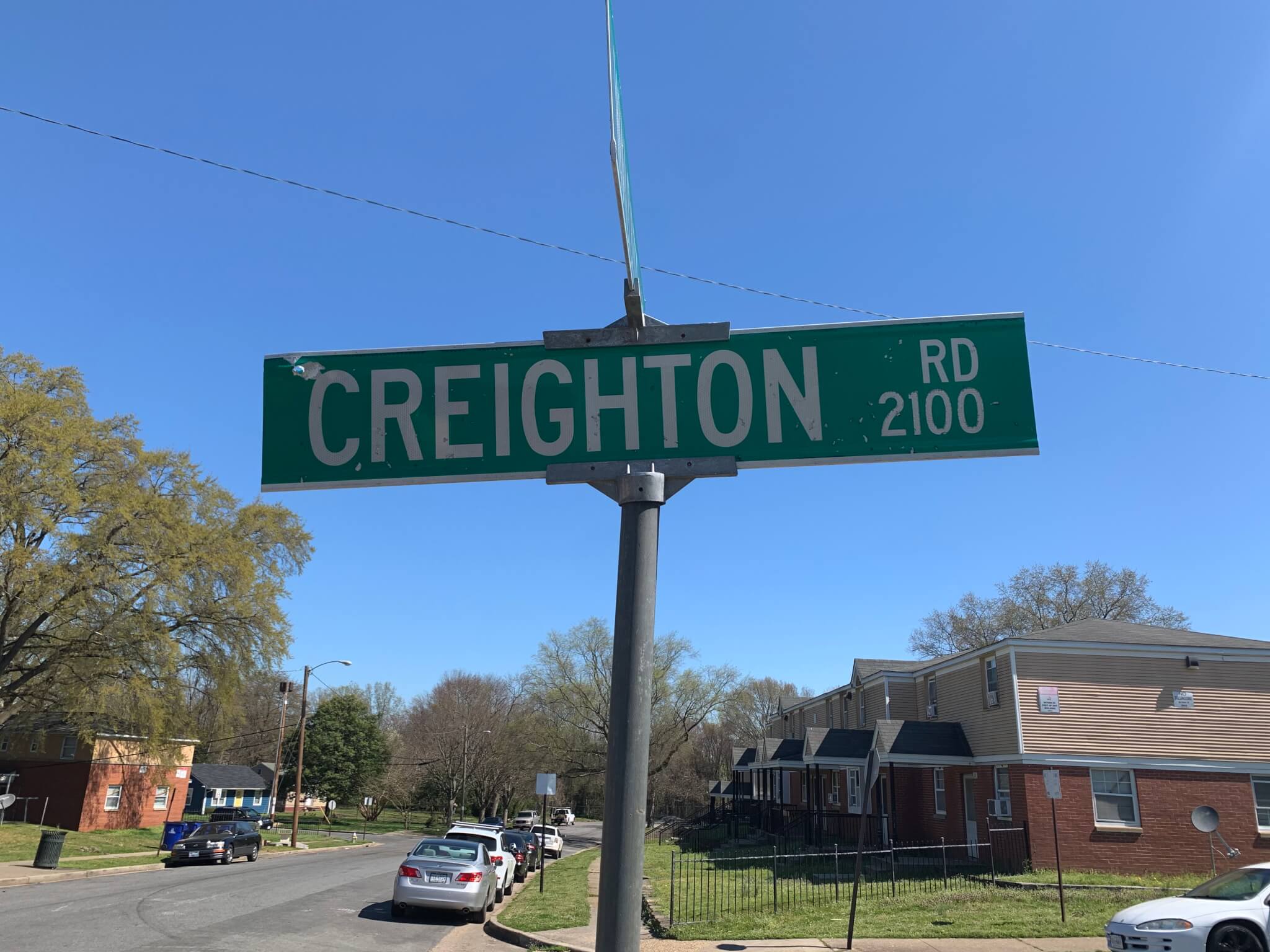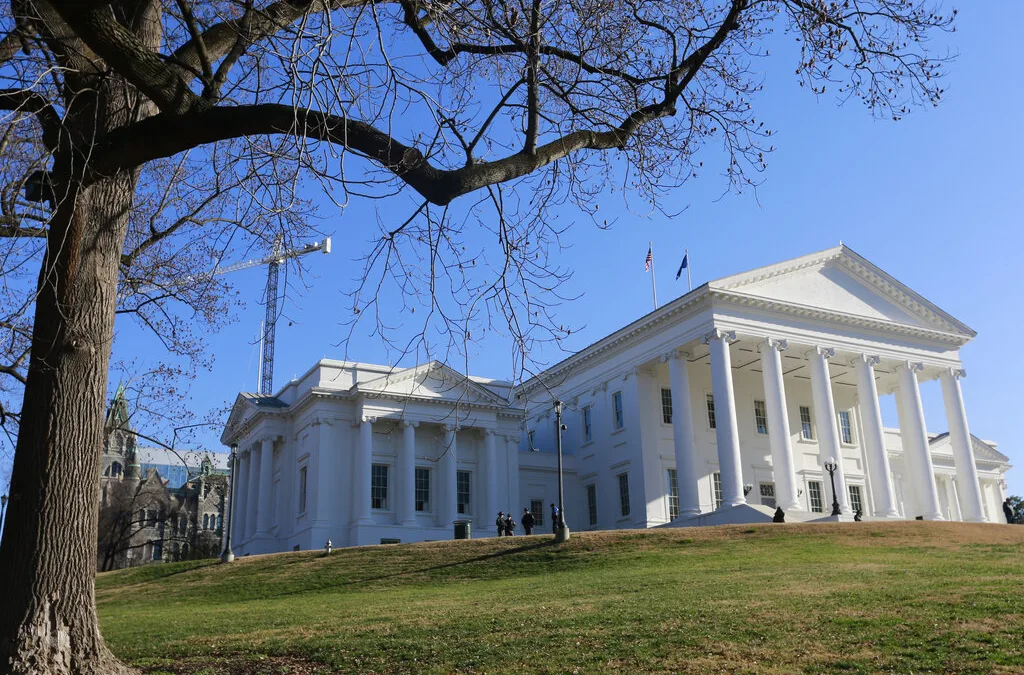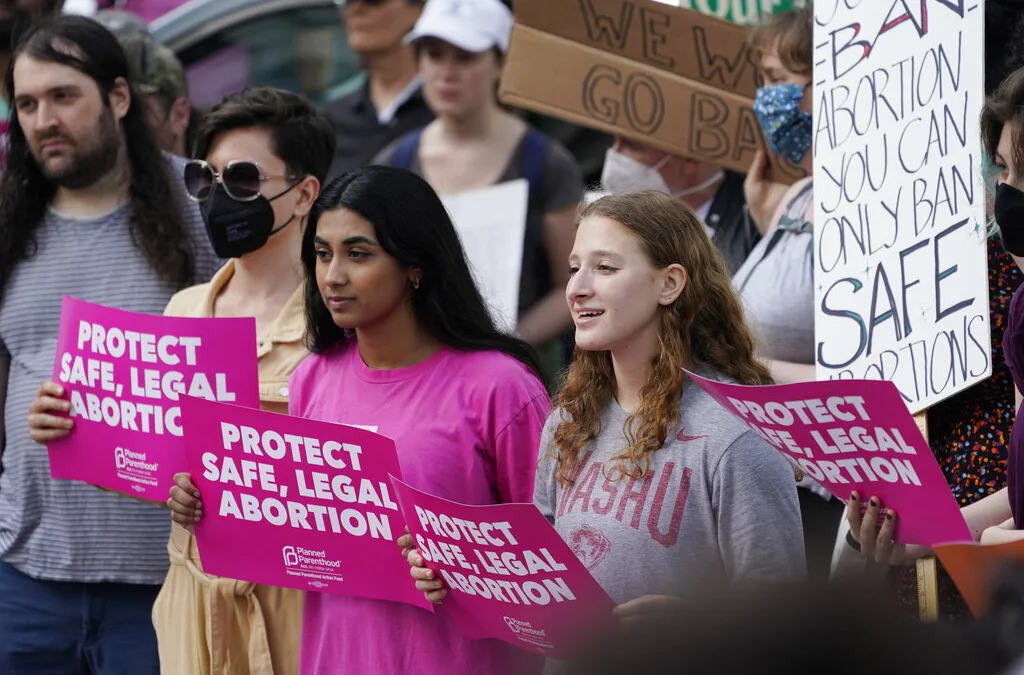
Creighton Court one of several public housing projects set to disappear without a replacement.
RICHMOND – Public housing projects including Creighton Court are about to disappear in Richmond. That’s happening by design.
283 children and 321 adults living at Creighton Court will be displaced from that public housing project in the near future. This mass displacement of families is part of the Richmond Redevelopment and Housing Authority’s (RRHA) plan for the city.
Transforming Richmond’s Public Housing Portfolio
RRHA is Richmond’s sole housing authority. It’s also the largest public housing authority in the Commonwealth, serving over 10,000 residents and managing over 3,000 units. Housing authorities distribute local and federal funding for housing assistance into the community by providing low-income residents with subsidized, extremely low-rent housing. That’s the idea anyway.
According to RRHA’s Five Year Agency Plan for 2020-2024, it’s ultimate goal is not providing low-income and very-low income housing, but “encouraging the development of affordable, mixed-use, mixed-income housing particularly in consort with broader neighborhood revitalization and RRHA’s goal to transform its entire public housing portfolio into mixed-income communities.”
Instead of continuing to provide stable public housing options for extremely low-income families, RRHA plans to convert the six largest public housing projects in Richmond into “mixed income” housing, with no promise of how many public housing units they’ll include in the redeveloped neighborhoods.
Creighton Court is only the beginning of that plan, which culminates in the redevelopment of Creighton, Mosby, Whitcomb and Fairfield, Hillside, and Gilpin Courts. That will end up impacting thousands of Richmond residents.
Creighton Court
Federal public housing in the US began in 1937 with the passage of the Housing Act. This was part of President Franklin D. Roosevelt’s New Deal, a policy which provided Americans recovering from the Great Depression with federal resources and job opportunities.
Richmond’s City Council didn’t create the RRHA until 1940. A year later, the city established its first housing project, Gilpin Court. In 1950, the council approved the RRHA’s request to develop Creighton Court.
Though originally evenly split between Black and white families, Black communities in Richmond became increasingly in need of public housing following the destruction of several historically Black neighborhoods and thousands of Black-owned homes by Richmond’s government. According to a study on public housing in Richmond by the University of Richmond, by the end of the 1950s, the city had destroyed 4,700 units of housing in Black neighborhoods.
Displacing Families Has Already Begun
According to Esco Bowden, a former resident of Creighton Court and activist, little has changed for Creighton Court residents in the last 70 years.
“We [still] have RRHA trying to knock down historically Black neighborhoods and then presenting no plan on what they’re going to do in return,” Bowden said.
Now, plans are already in place for the demolition and redevelopment of his former home.
The demolition of Creighton Court will happen in three phases, which steadily displace and rehouse residents throughout the development.
According to RRHA’s application for the demolition of Creighton Court to the US Department of Housing and Urban Development (HUD), 503 units in total will be demolished in this neighborhood. They’ll be replaced by 401 units, none of which are necessarily reserved for public housing recipients.
RRHA is already in the process of executing Phase One of their plan for Creighton Court, which includes displacing families from 192 units in the public housing project.
Public Housing vs. Mixed Income Housing
There are several important distinctions between mixed-income housing and public housing. First, public housing is federal aid that housing authorities administer to provide housing for low-income and very low-income residents at rents they can afford. Rent in public housing units is based on a family’s anticipated income, and can be as low as $25 a month, according to the HUD.
In Richmond, 85% of these units are occupied by residents making less than 30% of the average income in the city. According to comments by the Legal Aid Justice Center, The Virginia Poverty Law Center, and the Central Virginia Legal Aid Society on Richmond’s Redevelopment and Housing Authority’s Annual Agency Plan, the average income of public housing recipients in Richmond was $9,853 in 2020.
Mixed-income housing, however, are neighborhoods which contain residents with a wide range of incomes. They can contain public housing or other low-income housing options, but there’s no requirement forcing them to reserve a certain number of those units for public housing recipients.
How Much Will Be Public Housing?
According to a presentation by RRHA to Creighton Court residents, the mixed-income housing planned to replace Creighton Court will include market rate units. However, the housing authority has never made a commitment to whether any of its units will be reserved for public housing recipients.
According to RRHA Resident Services Director Ralph Stuckey, the housing authority is conducting an assessments of residents in order to determine how many housing units in the redeveloped Creighton Court will be reserved for public housing recipients.
“What happens is, residents will have an opportunity to apply for housing in the redeveloped Creighton Court. That project is a couple of years out, but what we do know is that it’s going to be a wonderful opportunity for our residents to actually apply to, come back to a better, revitalizalized Creighton,” Stuckey said.
Preemptively Displacing Families in Creighton Court
According to another of the RRHA’s presentations to residents of Creighton Court in January of 2020, leasing at Creighton Court ceased on April 8th, 2019.
And according to the HUD’s acceptance letter on the RRHA’s proposal for Phase One of the demolition of Creighton Court, the department did not receive an application for demolition until January 10, 2020. The RRHA didn’t receive approval for the demolition until March 4, 2021.
That means the RRHA stopped accepting applicants on the waiting list for public housing in Creighton almost two years before the demolition of those units even received approval from HUD. They have yet to receive approval for the next stage of Creighton Court’s demolition, or for the redevelopment of the neighborhood.
“I don’t understand how you’ve already passed a plan for demolition without having to provide any details about what you’re going to do in the future,” Bowden said.
Thousands on the Waiting List
Meanwhile, it takes years to access public housing resources in Richmond. That’s because the need for public housing units in Virginia’s capital city far outweighs its resources.
In July of last year, there were 3,998 families on the waiting list for public housing in the city. That’s according to the RRHA’s Annual Agency Draft Plan for 2020-2021. At that time, 581 elderly people were also on the waiting list for public housing in the city.
Despite there being almost 300 empty units in Creighton Court, RRHA Director of Public Relations and Communications Angela Fountain says not leasing these units has not impacted the availability of public housing in Richmond.
“The decision to not lease in Creighton Court does not impact the other properties we have. Creighton Court is going through a redevelopment, a transformation,” said Fountain. “Just because we are not leasing in Creighton Court does not mean it impacts, that it has a detrimental impact on our waiting list.”
RRHA Used to Evict Families at Alarming Rates
If you happen to visit Creighton Court, which you can find off Nine Mile Rd in the East End of the city, you’ll see that many of the units there have boards over their windows.
According to Bowden, that’s because not only has RHHA stopped leasing it’s properties since 2019, it has also been evicting its residents at alarming rates for years.
“If you go around Creighton, you see half of of it is boarded up,” Bowden said. “Last year, they evicted, well they attempted to evict, 50 people in one week.”
According to reporting by NBC12, in October 2019, RRHA filed 52 unlawful detainers, or notices of eviction, against residents of Creighton Court over a single month.
A Moratorium on Evictions at Creighton Court
Since news broke about that surge in evictions, there has been a moratorium on lease enforcements in Creighton Court. However, lease enforcements only apply to evictions related to nonpayment.
“Since October of 2019 we have not evicted a family for non-payment of rent,” said Stanley.
Also, RRHA’s application for approval of Phase Two of the demolition of Creighton Court to HUD states that only 296 of the development’s 503 units are currently occupied. That translates to only 58.85% occupancy.
“So many of the residents of Creighton have already been evicted, kicked out, left already,” said Bowden. “They stopped leasing units at least a year and a half ago, two years ago. So I just find it ironic when they say they’re going to the residents in Creighton and getting input from them, when they’ve already evicted and run out so many people.”
The DeFacto Demolition of Creighton Court
RRHA’s efforts to force residents to vacate Creighton Court also comes in the form of neglect. It’s what Omari Al-Quadaffi, community organizer at the Legal Aid Justice Center, calls ‘defacto demolition.’
“You stop maintaining units or you start creating the conditions where people are so desperate to leave that they’re going to accept whatever kind of voucher, anything, just to get out of that situation,” said Al-Quadaffi.
‘Defacto demolition,’ Al-Quadaffi says, creates the conditions for a property to receive a label of obsolete, which Creighton Court has been declared by the RHHA.
The RRHA’s application to approve Phase Two of Creighton Court’s demolition includes a physical conditions assessment. It states that “select rehabilitation has been performed in the past 10 years, however, past repairs were limited to cosmetic repairs to improve resident living spaces and property inspection scores. Past repairs and rehabilitations did not address the systemic structural and infrastructure issues of the property.”
Residents Say Vacancies Worsening Existing Issues
By making only cosmetic repairs to Creighton Court, the RRHA allowed it to fall into disrepair. Lodging in the public housing project, which hasn’t had an update since it’s construction in the ‘50s, wasn’t ideal to begin with. Now that properties are sitting vacant, residents say they’re having even more issues, including an explosion in the rodent population.
“As you see, there really are no residents here. A lot of these places are boarded up,” said Sherr Johnson, a former resident of Creighton Court who was recently relocated by RRHA. “And with that being said, that comes with other problems. There’s just one person in this row, so it’s got an infestation of mice.”
Residents also confirm that they’re willing to accept the demolition of their homes in exchange for putting the conditions at Creighton Court behind them.
“I’m so ready to leave Creighton Court. If they were to rebuild and come back, I’m not sure how I would feel about coming back,” said Billie Jean Fox, a resident of Creighton Court for the last six years. “I hope that they do rebuild and families are able to come back. I just wouldn’t be one of them.”
Representatives of RRHA agree that residents don’t want to return to Creighton Court. Stuckey says that of the 51 families the RRHA who’ve had assessments so far, only 12 want to return to the redeveloped community.
A Loss In Community and Safety for Children
RRHA’s plans for the demolition of Creighton Court has not only had an impact on the hygiene and quality of its buildings and surroundings. It’s also having an impact on the safety of the community.
“It was a lot of things. It was a lot of struggle. A lot of poverty. You see a lot of pain. But there’s also the other side of that. The Black community, there was a lot of gatherings, a lot of love. So you really have that dichotomy, you really see the extremes of both,” said Bowden. “Creighton was a place where I could go, a place to lay my head.”
Al-Qadaffi agrees, and says the neglect of Creighton Court has contributed to its loss of community and safety. He points to the ‘broken window’ theory as a reason for Creighton Court’s rapid decline. The ‘broken window’ theory states that visible signs of crime encourages further crime and disorder.
“We are hearing that there’s been a loss of the feeling of community. Crime has increased because of all the vacant units. People have said that it’s really become a desperate situation,” said Al-Qadaffi. “I was even around there one day and people were saying that there was a man found dead in his home. And they didn’t find him for a week. And they said that they felt like if the vacant units weren’t adjacent to him, that people would have noticed.”
Children Most Impacted By Demolition
More than anyone else, Creighton Court’s demolition is having an effect on the neighborhood’s children.
Bowden, who visits Creighton regularly, said many of them can’t comprehend what’s happening to their homes.
“A lot of the kids, some of the younger ones don’t know exactly what’s going on. But they keep hearing that Creighton is going to be knocked down. And that resonates with them. For instance, some of the older ones, it hits them, they’re very upset… I saw one of them cry. These kids have been through everything. I’ve never seen some of them cry. They get frustrated, they feel like, how are people outside from where they’re from coming in and making decisions? And they’re feeling like, how can they just come knock down our community?” said Bowden.
He says many of the families living in Creighton consider it to be their home. And, they take pride in coming from the area.
“They’ve had families, generations out there. It’s not often people take pride in a neighborhood, especially coming from a place like that. So some of the younger kids, they’re trying to grasp the concept. For the sixteen and older kids, it really frustrates them. For a lot of them, that’s the only place where they can go and hang out. And feel like they’re accepted,” Bowden said.
What’s Next for Residents of Creighton Court?
This is just Part One in our series about the demolition and redevelopment of Creighton Court. Check out the Dogwood later this week for Part Two. In that story, we’ll examine what comes next for residents of Creighton Court, and for public housing in Richmond overall.

VIDEO: Your support matters!
Your support matters! Donate today. @vadogwoodnews Your support matters! Visit our link in bio to donate today. #virginianews #virginia #community...

Op-Ed: Virginia’s new Democratic majorities pass key bills to improve your lives, but will Youngkin sign them?
The 2024 Virginia General Assembly regular session has wrapped up. It was a peculiar session from the outset, with Democratic majorities in the...

Op-Ed: Why Virginia Needs A Constitutional Amendment Protecting Reproductive Freedom
Virginia’s recent election season in 2023 drew in eyes from all over the country. Reproductive freedom was on the line and Virginia remained the...

From the state rock to the state flower, here’s how Virginia got its symbols
Have you ever wondered why the Dogwood is the state flower? Or how the cardinal became the state bird? We’re here to answer those questions and more...

VIDEO: Second-gentleman Douglas Emhoff gives speech on reproductive freedom
Second gentleman, Douglas Emhoff touched on reproductive freedom not only being a woman's issue but "an everyone's issue" during the Biden-Harris...

Glenn Youngkin and the terrible, horrible, no good, very bad night
Election Day 2023 has come and gone, and while there are votes to be counted, one thing is perfectly clear: Virginians unequivocally rejected Gov....









